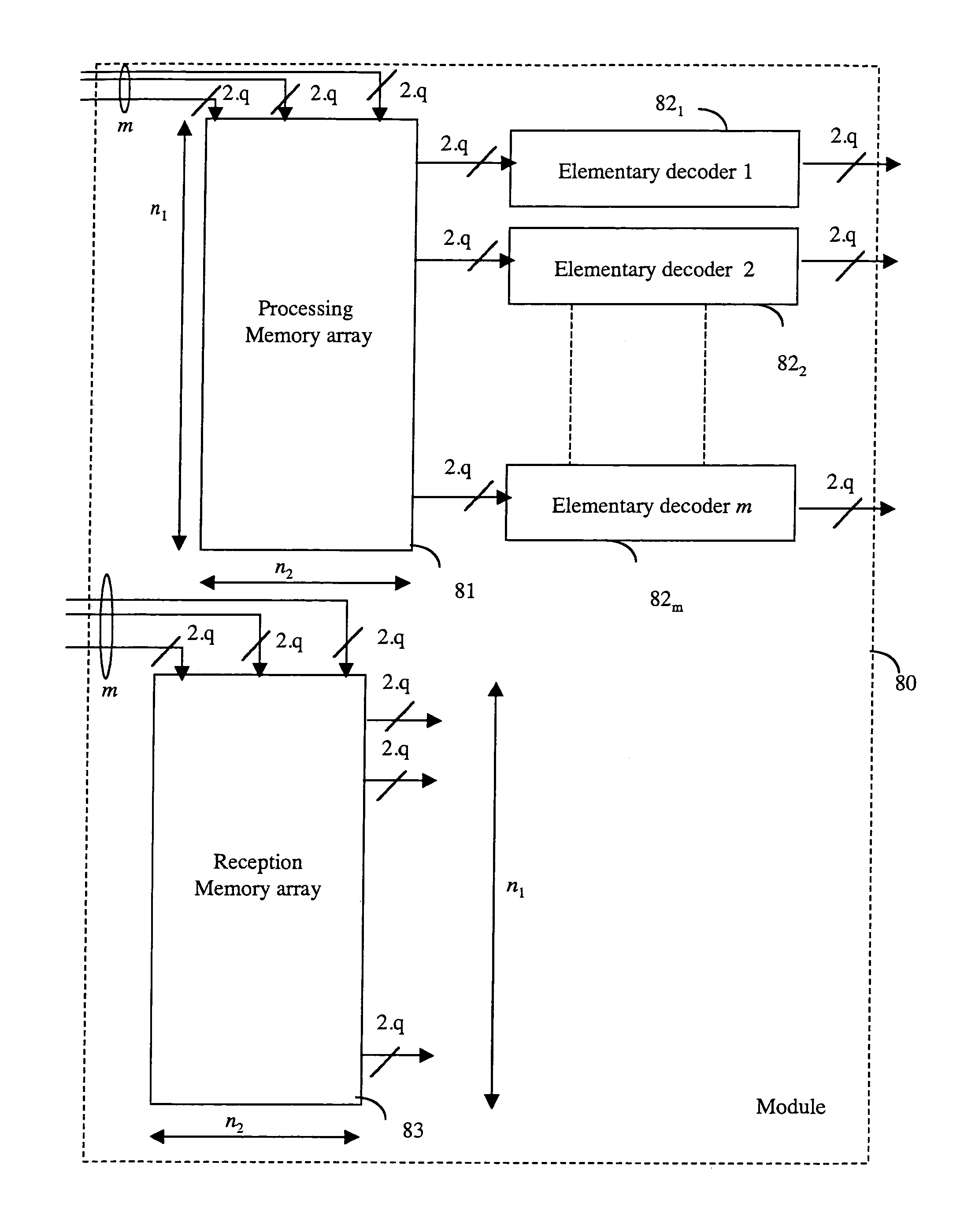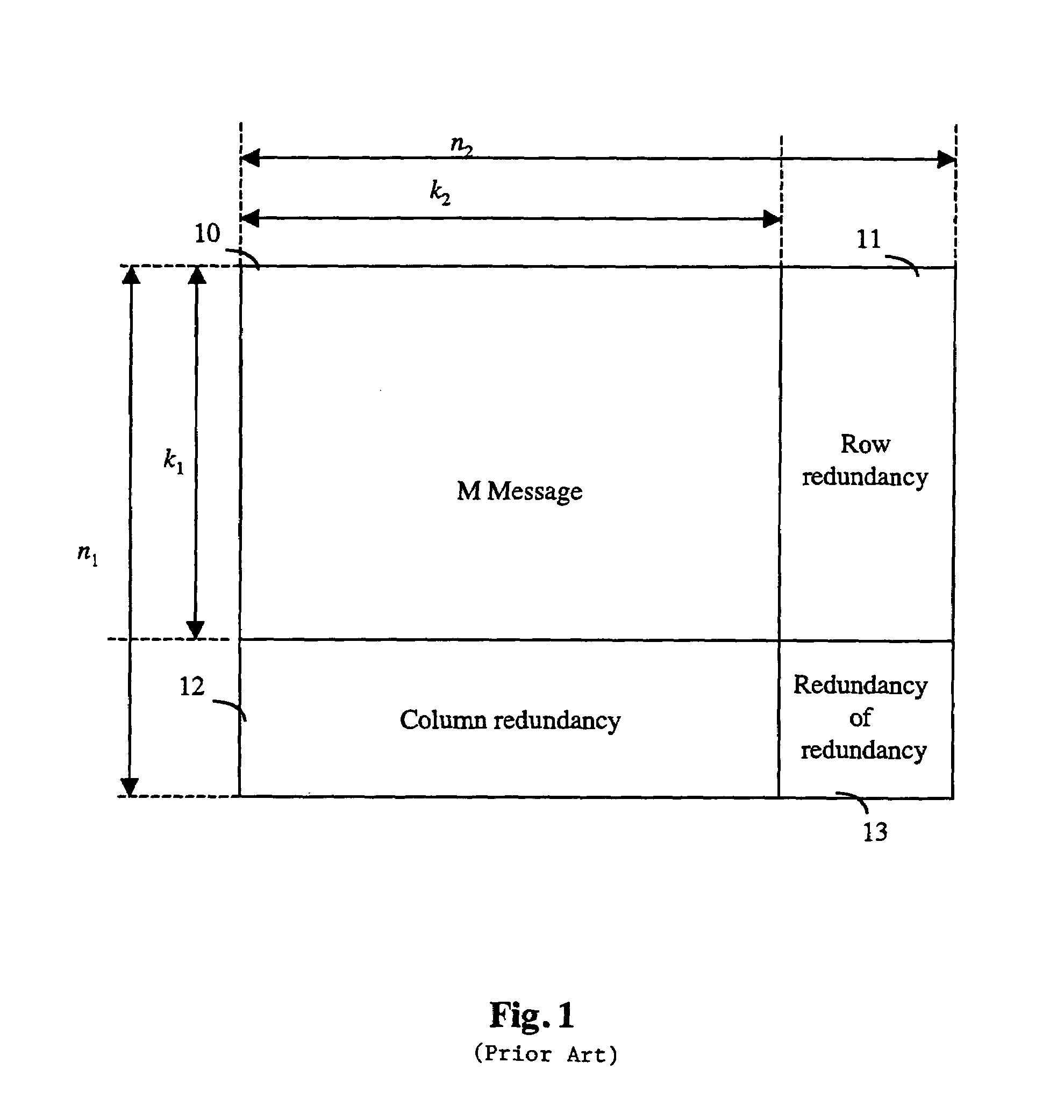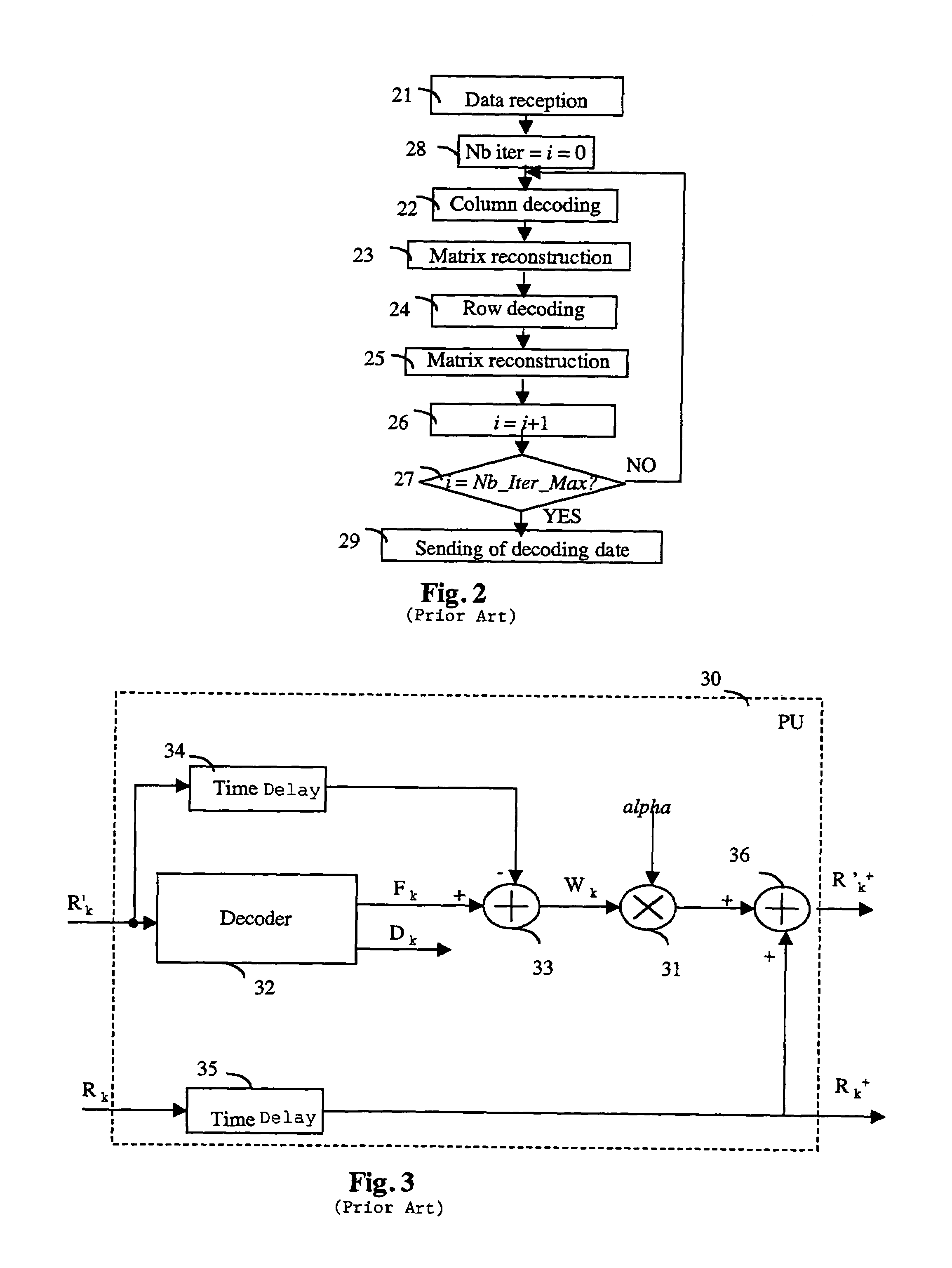High-speed module, device and method for decoding a concatenated code
- Summary
- Abstract
- Description
- Claims
- Application Information
AI Technical Summary
Benefits of technology
Problems solved by technology
Method used
Image
Examples
Embodiment Construction
[0127]The general principle of the invention relies on a particular architecture of the memories used in an operation of concatenated code decoding and more particularly the decoding of these codes.
[0128]The concatenated codes are decoded iteratively by decoding first of all each of the elementary codes along the rows and then each of the elementary codes along the columns.
[0129]According to the invention, to improve the decoding bit rate, the elementary decoders are parallelized:[0130]to decode (see FIG. 1) the n1 rows, m1 (2≦m1≦n1) elementary decoders of the code C2 are used, and / or[0131]to decode the n2 columns, m2 (2≦m2≦n2) elementary decoders of the code C1 are used.
[0132]Each elementary decoder has input data coming from a reception and / or processing memory and gives output data that is kept in a reception and / or processing memory. In order to further improve the decoding throughput rate while maintaining a circuit clock speed that continues to be reasonable, several pieces of...
PUM
 Login to View More
Login to View More Abstract
Description
Claims
Application Information
 Login to View More
Login to View More - R&D
- Intellectual Property
- Life Sciences
- Materials
- Tech Scout
- Unparalleled Data Quality
- Higher Quality Content
- 60% Fewer Hallucinations
Browse by: Latest US Patents, China's latest patents, Technical Efficacy Thesaurus, Application Domain, Technology Topic, Popular Technical Reports.
© 2025 PatSnap. All rights reserved.Legal|Privacy policy|Modern Slavery Act Transparency Statement|Sitemap|About US| Contact US: help@patsnap.com



